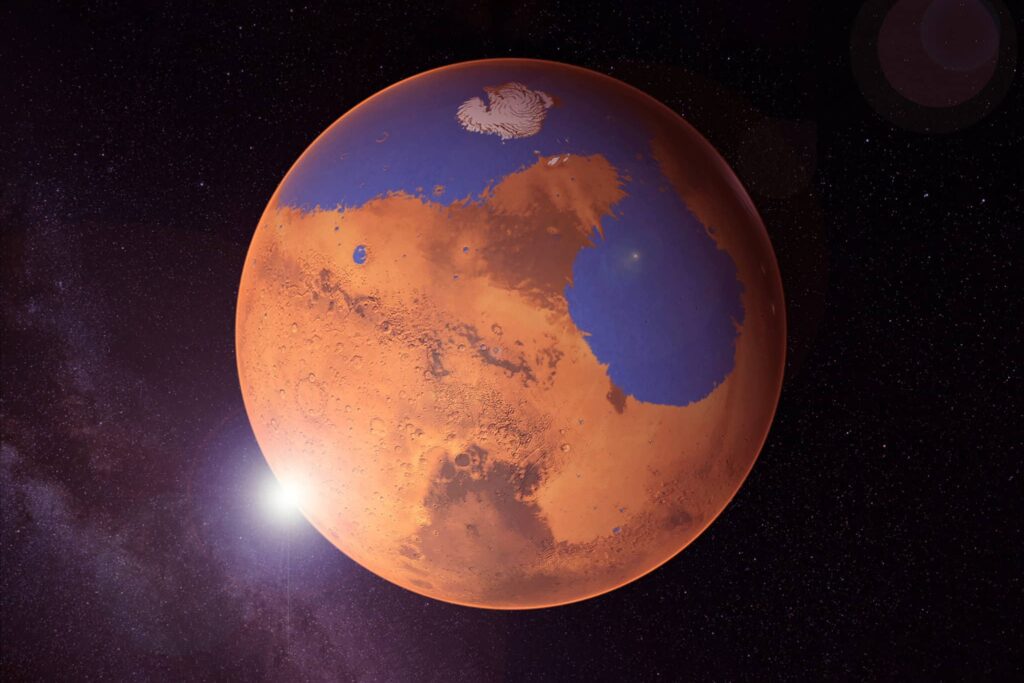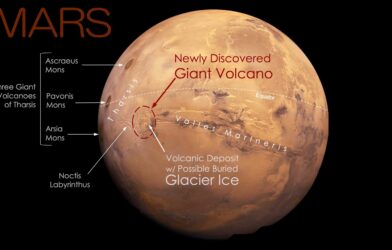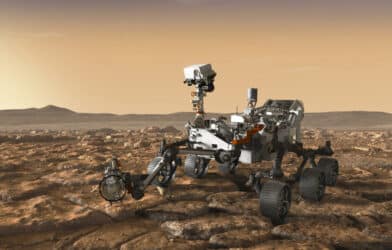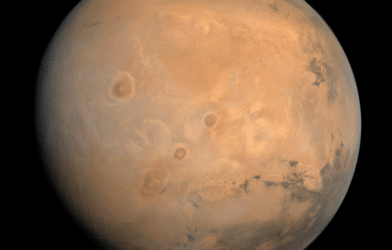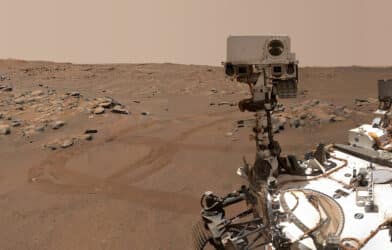Scientists employ a unique technique to analyze Mars’ gravitational force, pointing to a long-lost ocean on the Red Planet
Hold onto your telescopes, space fans! A cutting-edge study takes us one step closer to confirming that Mars wasn’t always the barren wasteland we see today. Using an innovative technique to study the Red Planet’s gravity, scientists have found evidence pointing to a vast ancient ocean in Mars’ northern region.
Forget about traditional ways of mapping planetary surfaces based on “gravity anomalies.” This study employs something way cooler: “gravity aspects.” Sounds complicated? Don’t worry, it’s just a fancy term for mathematical models that help scientists get a more complete picture of how gravity varies due to a planet’s surface features, like mountains or trenches.
Why We Should Care About Water on Mars
Before we dive further into the science, let’s tackle the big question: why does this matter? Study co-author Gunther Kletetschka, associate research professor at the University of Alaska Fairbanks Geophysical Institute, delves into the intrigue: “A lot of people are excited about water on Mars because there may be life forms that once existed on Mars or maybe exist today in some bacterial form.”
That’s right, a watery Mars makes the possibility of past or even current life on the planet far more likely.
To uncover this celestial scoop, researchers used topographic data from the Mars Orbital Laser Altimeter, a high-tech instrument that flew around Mars for over four years on NASA’s Mars Global Surveyor. This helped them apply their “gravity aspects” method with more accuracy, giving a detailed look at what the ancient Martian ocean might have been like.
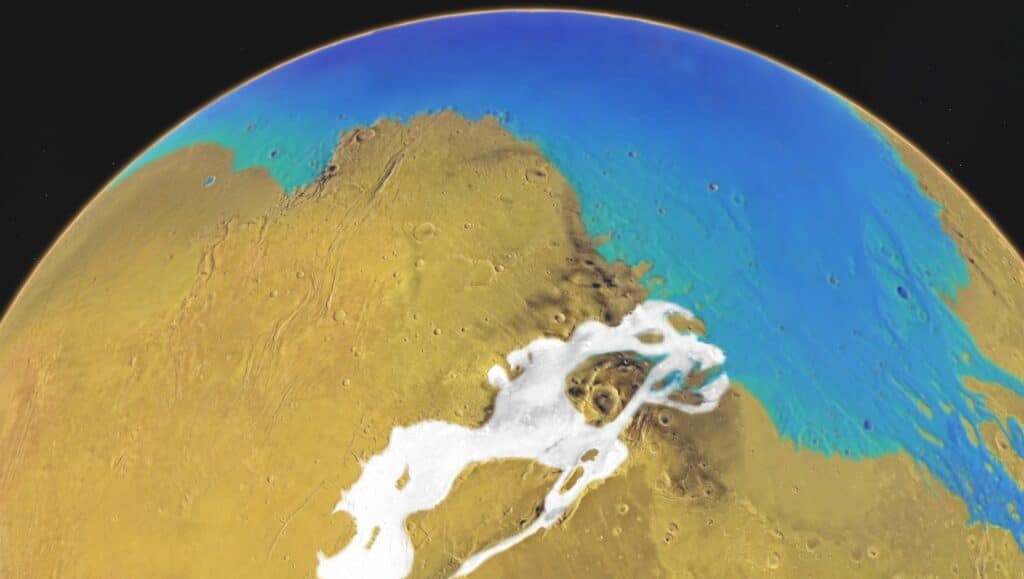
Interestingly, this method has not only been used to study Mars but also Earth and Venus. Kletetschka is a co-author of a paper published in July 2023, which uses the gravity aspects method to compare Earth’s geographical features with those of Venus.
The implications of this research are far-reaching. As the authors note, this gravity approach provides “complete information with a better insight of the celestial body,” which can be useful in multiple scientific disciplines like geology, geophysics, hydrology, and glaciology.
The possibility of an ancient Martian ocean doesn’t just make for great science fiction; it’s now a scientific theory backed by compelling evidence. This study opens new doors in the ongoing quest to understand if life ever existed elsewhere in our solar system—or if it might still be out there today.
The research paper for this study is published in the journal Icarus.
